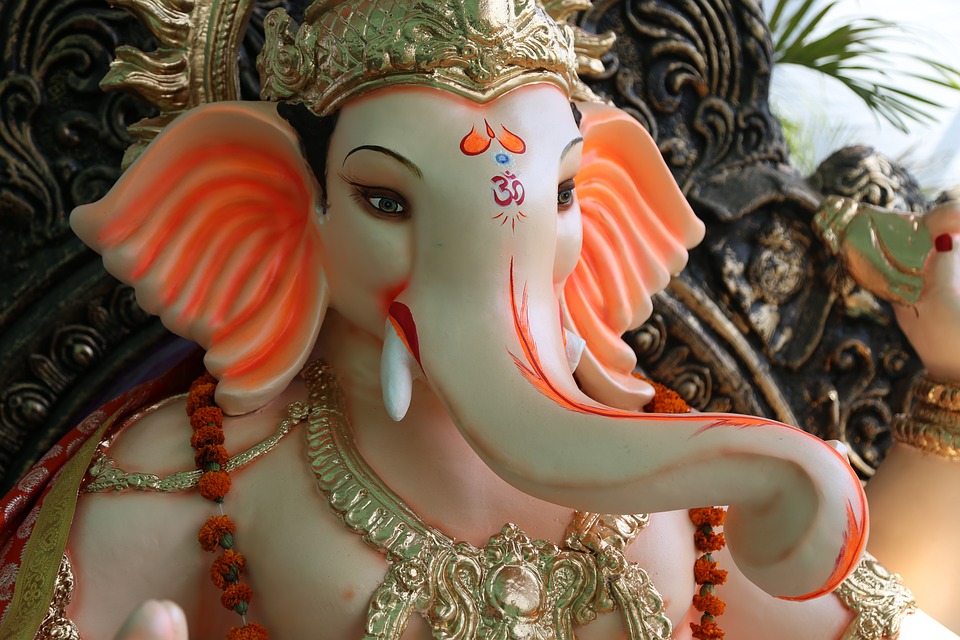In this article, we will tell you all the facts about Ganesh Chathurthi

Introduction
There is no denying the truth that India is a country of celebrations. Considered as a land of diverse cultures, customs, and traditions. There is a celebration for every faith, season and even agricultural milestones. An event to celebrate with friends and family, celebrations associated with routines, merriment and of course delightful food.
One of the imperative Hindu festivals committed to the God of beginnings, Lord Ganesha aka Lord Ganapati is Ganesh Chaturthi. Celebrated on the 4th day of the waxing moon duration (Shukla Chaturthi) of the Hindu month of Bhadrapada. Ganesh Chaturthi falls each year either in the month of August or September. It’s to commemorate the birth of Lord Ganesha, the child of Lord Shiva and Goddess Parvati. The celebration likewise called Vinayaka Chaturthi is a ten-day affair and celebrated with pomp and reveal. People observe it throughout different states in the country.
Setup of clay idols
Apart from worshipping the idol of Lord Ganesha that is present in each home, the festival recognizes by bringing home a clay idol of the Lord. It is specially prepared throughout the festival. Thus, it’s a common sight to see scores of vibrant idols lining the streets weeks prior to the celebration. Looking for an idol is a big source of enjoyment. Usually, the male members of your house bring the idol. Idols that have the trunk pointing towards the right (“Balamuri” Ganesha) are auspicious. For this reason, people highly prefer them. In states like Karnataka, people initially worship Ganesha’s mother “Gowri”. On the day prior to the celebration, both idols of Gowri and Ganesha are brought home together.
It is not only in houses but likewise, city streets and areas bring in their own idols. A few of which reach a height of 25 feet and more. Mumbai and Hyderabad are cities that are known for their awe-inspiring Ganesha pandals and idol. The one installed in the Khairatabad area of Hyderabad is one of the highest reaching 60 feet and greater! Most idols submerge on the advantageous day of ‘Anant Chaturdasi” which falls 10 days after the celebration.
Forgiveness is the ultimate virtue
Teachings of Lord Ganesh
Elaborate praise
On the day of the festival, individuals get up early, have a bath and adorn brand-new clothing. Then they start the puja of the Lord. Devotees bring the idol home and install it in a particular location. It’s either put on a plate of rice beneath or a red cloth on which they sprinkle some rice. Colourful Rangoli or kolam is also done. the doors embellish with mango leaves. The devotees then embellish the idol highly with flowers of different kinds. Some of these flowers are highly auspicious to Lord Ganesha. These consist of the red hibiscus flower, the flower or inflorescence of the areca nut tree. Sometimes, the blue Clitoria Ternatea flower too.
In southern India, no puja of Lord Ganesha is whole without the offering of Durva lawn and the calotropis procera flowers. These are usually strung into a garland. Apart from flowers, 5 kinds of leaves consisting of ‘bilwa patra’ is also an offering Accompanying it are intricate patterns one makes from cotton (Gajje vastra). The latter are typically made and used by the ladies folk of the household. The chanting of 108 names of Lord Ganesha is another highlight of the puja. This is along with hymns, bhajans and an elaborate offering of food.
Unique food offerings or naivedyam

Ganesh Chaturthi is synonymous with a host of speciality foods that are offerings to the Lord. God himself is a fan of foods like modak, laddoos etc. Thus devotees prepare his favourite food. Sweets like kadabu, modak and patole are popular in Karnataka and Maharashtra. These are sweets which are basically a mix of coconut and jaggery completed packets made from rice flour. These are then steaming either in banana or turmeric leaves. Motichoor laddoos, lemon rice, Shreekand, puran poli, banana sheera as well as payasam are some other foods for the festival.
In coastal Karnataka, special savoury rice dumplings made from a fermented batter of rice (or idli rava) and urad dal are steamed in screw pine leaves and provided to the Lord. Moode Kadabu or Kotte kadabu, people consider it really auspicious to the Lord and are also highly considerable ‘sevas’ in popular Ganesha temples like Annegudde and Guddattu Vinayaka temples in Udupi district. Panchakajjaya which is a dry mixture of different active ingredients like gram dal, sugar, sesame seeds and cardamom amongst others is yet another crucial offering to Lord Ganesha here. The preparation of chakli or savoury rice flour spirals and laddus of sesame seeds and dry fruits are also special offerings in this area.
Devotees consider twenty-one a lucky number and most foods like modak, laddus and chakli are offerings in this number. The Ganesh Chaturthi puja concludes with a grand ‘aarthi’ after which member of the family take blessings of their seniors and take pleasure in a grand meal. The idols in your houses shall submerge the exact same evening or on the 5th or 3rd day.

